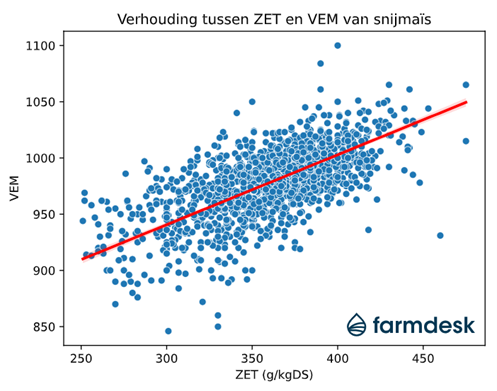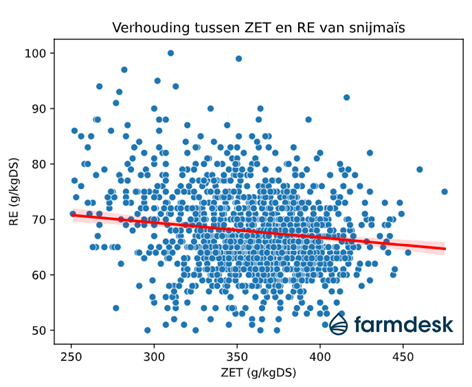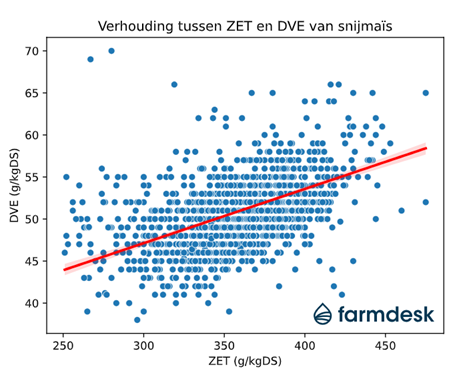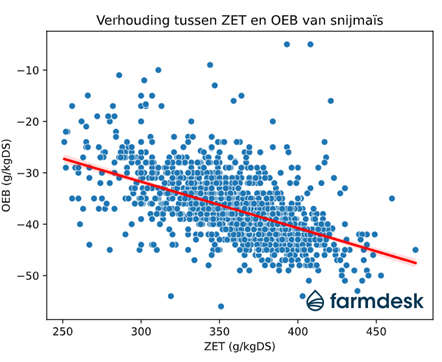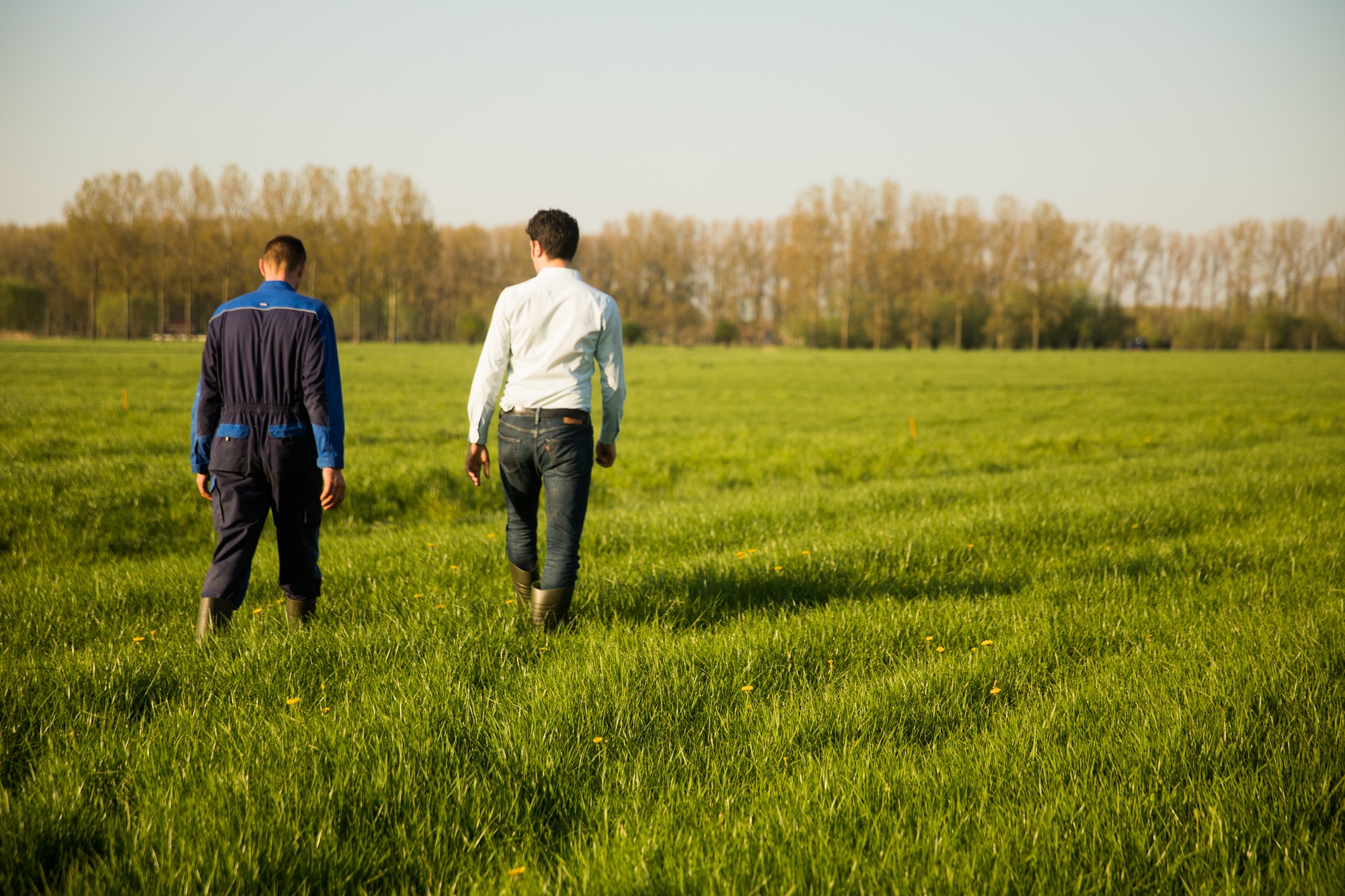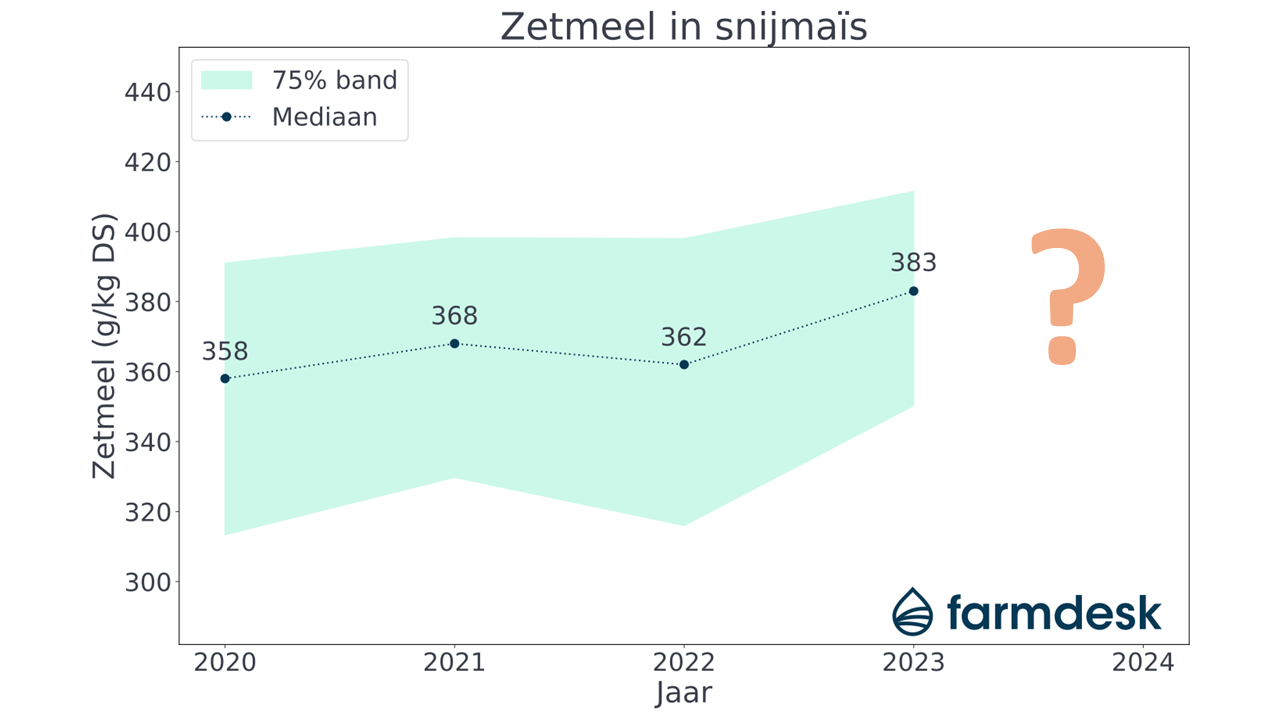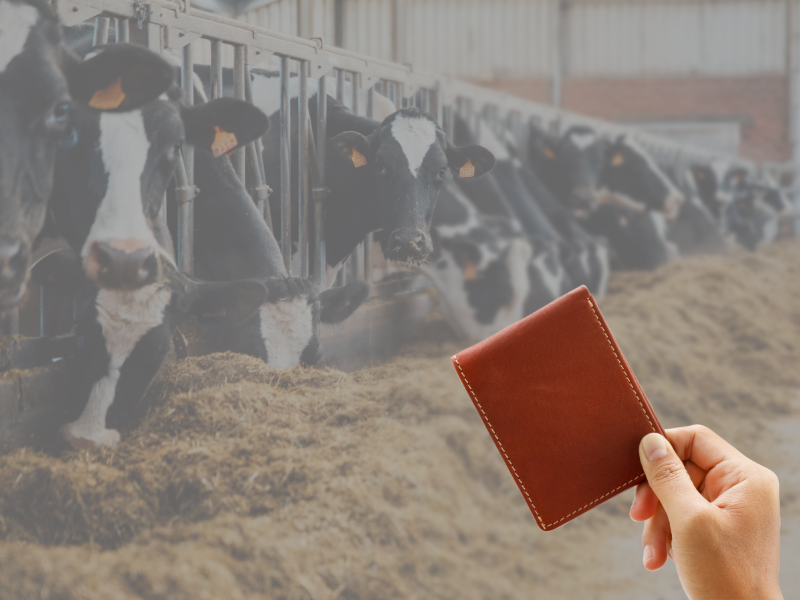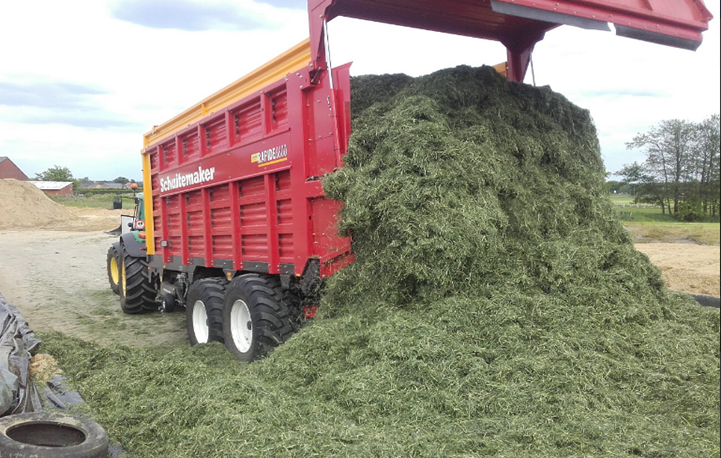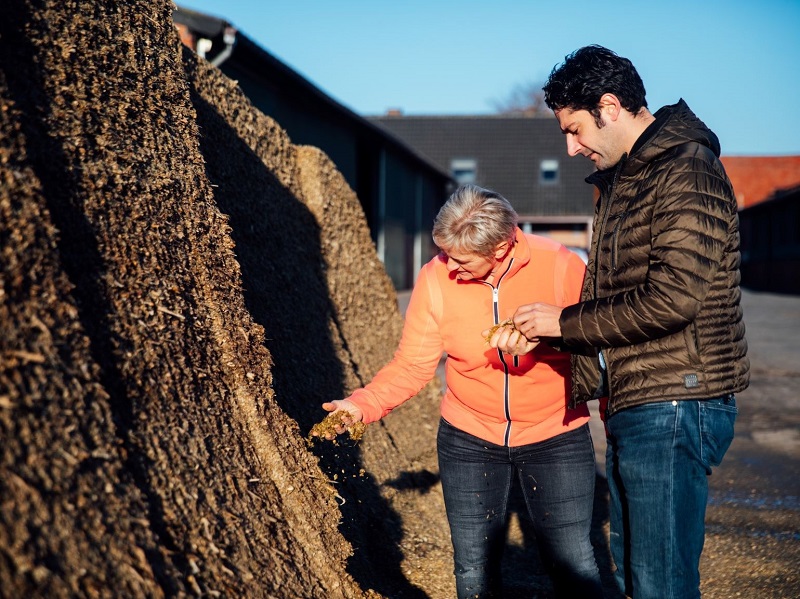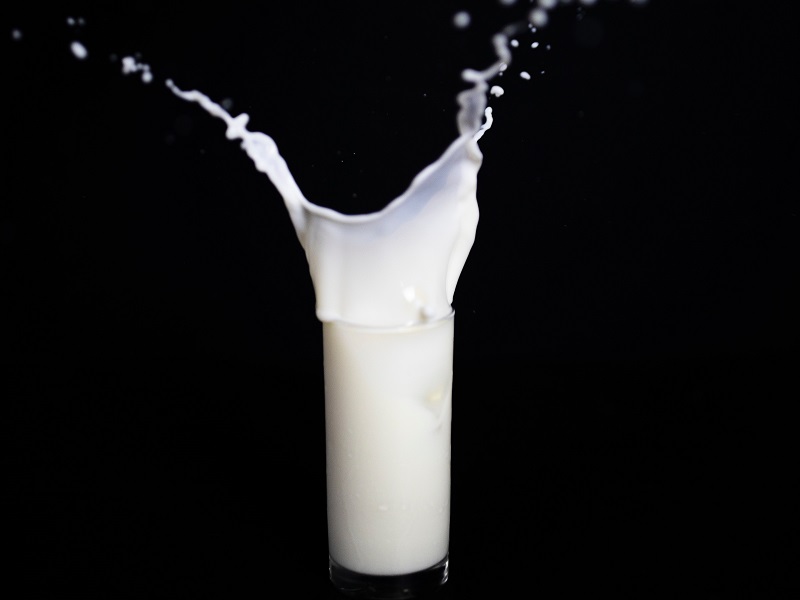The article below is based on more than 1,700 maize silage analyses from Farmdesk users spread across the Netherlands and Belgium between 2018 and 2023. Analyses with starch content lower than 250 g/kg DS are not included.
Silage corn plays a crucial role in boosting milk production in livestock production because of its rich nutritional profile and digestibility. As a feed raw material, silage corn provides an excellent source of energy, mainly in the form of starch. In addition, silage corn is a good source of digestible fiber, which contributes to healthy rumen fermentation and improves overall feed digestibility. This in turn contributes to optimal feed intake and efficient utilization of nutrients by the animal.
In this article, we focus on the analysis of the relationship between starch on the one hand and VEM and DVE on the other hand to better capture the milk-driven nature of silage corn.
Relationship between starch and VEM
The positive correlation between starch and VEM is self-evident. The VEM (Feed Unit Milk) content is a measure that indicates the energy value of feedstuffs. Thus, a higher VEM content means that the feed material contains more energy. Since starch is an important source of energy for ruminants, it is logical that a higher starch content in feedstuffs results in a higher VEM content.
Read our previous article on the energy digestion in cattle for more info.
This trend is confirmed by the figure below; 1 VEM = 0.62 x ZET + 756.37. This means that on average, corn with 10 points more starch also has 6.2 points more VEM.
Relationship of starch and RE
With increasing starch content, the crude protein content of silage corn will decrease slightly. This can be explained by the competition between the processes in which the plant uses nutrients partly for starch synthesis and partly for protein synthesis. The more nutrients the plant uses for starch production, the less nutrients the plant has available for protein production.
The figure below confirms this trend: 1 RE = -0.048 x 1 ZET + 83.93
Relationship of starch and DVE
In addition, there also appears to be a positive relationship between starch and DVE.
A starchy silage is accompanied by a high proportion of energy that becomes available to rumen bacteria, allowing more microbial protein to be formed. This microbial protein ends up in the small intestine and thus falls under the heading of Intestinal Digestible Protein. From this perspective, it can be concluded that a starch-rich silage corn silage is generally associated with a higher DVE content.
The figure below confirms this trend; 1 DVE = 0.065 x ZET + 27.39. This implies that generally corn with 10 points more starch also has 0.65 points more DVE.
Please also read our previous article on the protein digestion in cattle.
Relationship of starch and OEB
While DVE increases with increasing starch content, OEB content of silage corn decreases with increasing starch content.
This can be explained by the increasing amount of starch (and thus energy) entering the rumen which reduces the availability of rumen protein.
OEB (Unstable Protein Balance) shows how much protein and energy is available in the rumen, and whether the two are in balance.
This trend is confirmed by the figure below, where the relationship is shown as 1 OEB = -0.096 x ZET - 2.08.
Conclusion
A statistical analysis on a data set of more than 1,700 silage maize analyses shows that, on average, higher starch content increases the milk drive of silage maize because it improves both energy value (VEM) and protein quality (DVE).
